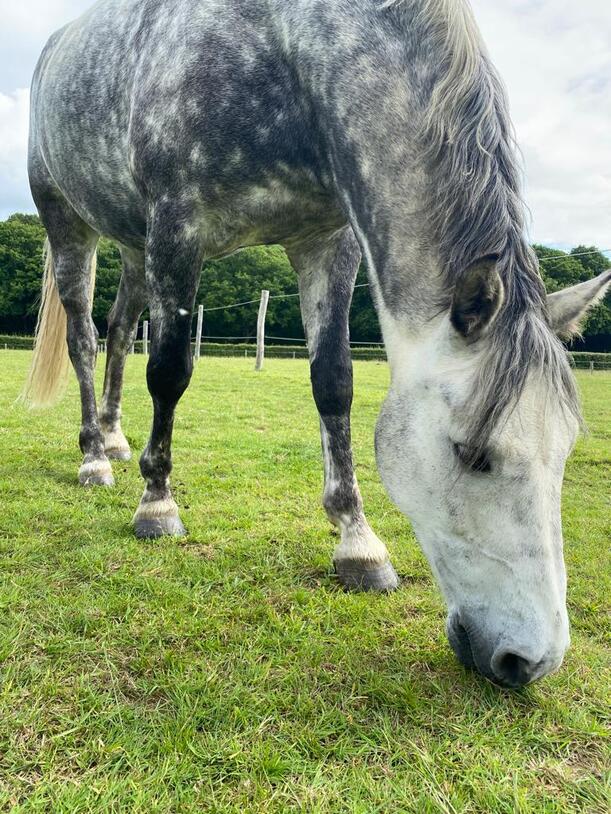Laminitis is a serious hoof disease, causing changes in the hoof anatomy which can have long term and crippling effects on the horse’s function, and is known as one of the biggest causes of death in horses. The condition affects the horse’s laminae (the soft tissue which connects the hoof wall to the pedal bone) and can cause a significant amount of pain and resulting lameness.
There are some obvious signs your horse may be suffering from Laminitis, and the earlier these are caught the less damage is likely to have been done in the hoof structure. If your horse is displaying these symptoms, contact your vet, or farrier, to investigate immediately. The likely first step will be box rest on a comfortable and supportive bedding.
Stance – a Laminitic horse will find it comfortable to stand with their weight shifted to the hind legs with their front legs stretched out in front of them.
Rocking – you may see your horse shift weight from foot to foot, or rock back and forth in their stable or paddock.
Walking – when walking, they may walk gingerly, slowly or tentatively and feel more comfortable on grass or a soft surface.
Turning – the horse may struggle to turn in a circle when walking in hand.
Lying down – a horse with sore feet is likely to spend more time lying down to ease the pressure on their feet.
Pulse – a horse with Laminitis may have a strong digital pulse and/or excessive heat in the hoof – these are very important signs to look out for.
These are an example of the most common symptoms, however contacting your vet at the earliest possible chance will increase your horse’s long term prognosis.
Prevention
Condition – Keep an eye on your horse’s condition and regularly record their weight with a
weight-tape, an obese horse is more likely to be at risk of Laminitis than one of a healthy weight. Winter is the perfect opportunity to allow those ‘good-doers’ to shift a little weight; don’t be tempted to over-rug and allow them to use their own body fat to keep themselves warm. Remember your horse’s diet needs to be appropriate to their condition and workload; if you’re confused about feeding a balanced diet you can speak to an equine nutritionist to ensure your horse is receiving the essential nutrients without excess calories.

Exercise – keep your horse physically active to keep the weight off them.
Analyse hay & grass – get your grass and hay analysed to check their NSC (non-structural carbohydrate) content.
Soak hay – soaking hay in clean water and rinsing it after will go a long way in reducing your horse’s sugar intake. It’s important to maintain your horse’s fibre intake even if suffering from Laminitis, so soaking your hay and putting it inside a
small-holed hay net will help to prolong their hay ration.
Use a grazing muzzle – a
muzzle to slow down your horse’s grass intake can be beneficial when on grass, even if only used for short periods of time.
Other Causes
A large number of Laminitis cases are attributed towards hormonal problems like Equine Metabolic Syndrome or Equine Cushings Disease; these impact on a horse’s ability to regulate specific hormones and can cause laminitis. Other triggers can include drug reactions, high fevers, stress and steroid induced causes. So, although grass is frequently blamed, some have other underlying causes which still need addressing.
What Next?
If your horse is diagnosed with Laminitis, there are a few medical treatments as well as shoeing options, but box rest is likely to be the primary advice as well as reducing sugar from their diet (and cutting the treats!). Prevention is always better than cure, so keep an eye out for any of these signs of Laminitis this Autumn. Remember even when controlling your horse’s diet, it’s important they are receiving the necessary nutrients to maintain their health, consider adding either a balancer to their feed or a
vitamin & mineral supplement.



